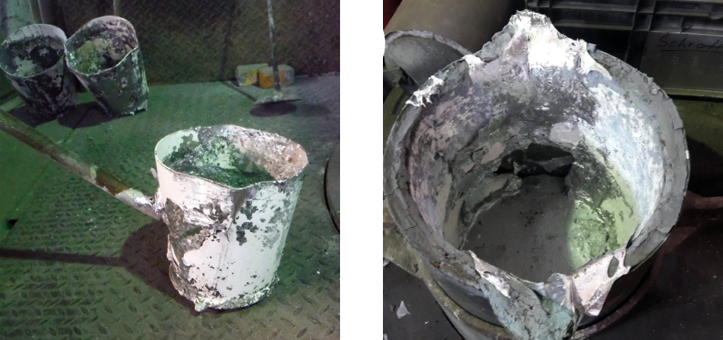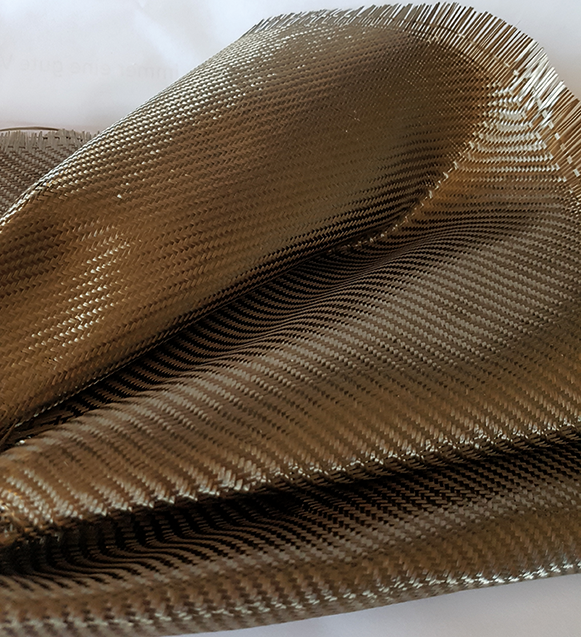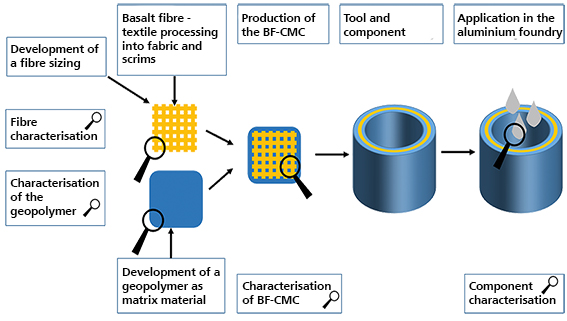Completed funded project
Motivation
With a share of 88%, aluminium casting currently dominates non-ferrous metal casting production. The trend towards energy-saving cars, new applications in e-mobility and efficient material cycles will further increase the use of aluminium. At present, hand casting crucibles and other production aids such as casting troughs, tundishes and moulds made of metallic and ceramic materials are used for the transport and processing of aluminium melts. However, these materials have weak points: the high wear and tear of the metallic hand casting crucibles is a serious problem. This not only results in high repair costs but also impairs ongoing production.
Objective
An alternative is handmade crucibles made of fibre-reinforced oxidic ceramic. These have a longer service life and higher operational safety. There are currently two established systems: Al2O3-SiO2 matrices reinforced with Al2O3 or SiO2 fibres and CaSiO3 matrices reinforced with SiO2 fibres. However, these materials are very expensive, mainly due to the high price of ceramic fibres. Therefore, the aim is to develop a ceramic fibre composite material (CMC) which meets the requirements of the casting process and is far more cost-effective to produce than the alternative materials used so far.
Results
Within the scope of the project, deep insights were gained in the field of geopolymers. In particular, their behavior under high temperatures and in interaction with various fiber materials provided revealing results.
- GMC systems were developed which, on the one hand, ensure good processing in the casting process and, on the other hand, good mechanical properties even at temperatures around 550 °C.
- Basalt fiber types that meet the high requirements were identified, as well as a matrix system made of geopolymer that can withstand the operating temperatures. Although the strengths are lower than the values at room temperature, they remain at a sufficiently high level to withstand use in aluminum casting.
Project Data
| Project Duration | 01.07.2020 - 31.06.2023 |
| Sponsor | Central Innovation Programme for SMEs (ZIM) |
| Funding Amount | 100,600 Euro |
| Project Partners | Fraunhofer-Centre HTL InovaCeram Metallgießerei Chemnitz GmbH Technische Universität Chemnitz |
| Project Coordination | Andrea Preuß (TU Chemnitz) |
| Project Management at the HTL | Peter Vierhaus |

 Fraunhofer ISC, Center for High Temperature Materials and Design HTL, Bayreuth
Fraunhofer ISC, Center for High Temperature Materials and Design HTL, Bayreuth

